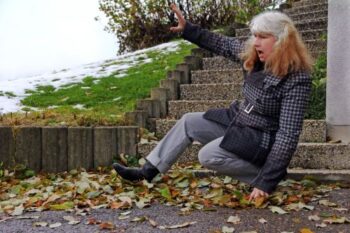California, with its bustling urban centers and scenic landscapes, is a state filled with diverse properties. From commercial establishments to private residences, the responsibility of maintaining safe premises rests on the property owners and occupiers. When it comes to slip and fall claims, understanding the nuances of premises liability laws in California is crucial. Timothy J. Ryan & Associates is here to shed light on how these laws apply and the requirements that come with pursuing a slip and fall claim in the Golden State
The Foundation of Premises Liability Laws
Premises liability laws in California are rooted in the principle that property owners and occupiers have a duty to maintain their premises in a reasonably safe condition for those who enter the property legally. This duty applies to various types of properties, including residential, commercial, and public spaces. When it comes to slip and fall claims, the focus is on the duty of care owed to visitors, customers, or guests.
Legal Responsibility and Slip and Fall Claims
Property owners and occupiers are legally responsible for injuries that occur on their premises due to hazardous conditions. In the context of slip and fall claims, hazardous conditions may include wet floors, uneven surfaces, poorly maintained walkways, or inadequate warning signs. The key factor in establishing liability is proving that the property owner or occupier was negligent in addressing or warning about the dangerous conditions that led to the slip and fall.
Comparative Negligence in California
California follows a comparative negligence system, meaning that the injured party’s own negligence does not necessarily bar them from recovering damages. However, the amount of compensation may be reduced based on the degree of the injured party’s fault. This adds complexity to slip and fall claims, as the court may assess the actions of both the property owner and the injured party in determining liability and damages
Notice and Foreseeability in Premises Liability
In slip and fall claims, establishing notice and foreseeability is crucial. Property owners are expected to be aware of the conditions on their premises and take reasonable steps to address potential hazards. Notice refers to the property owner’s awareness of the dangerous condition, while foreseeability involves whether the owner could reasonably anticipate that the condition could cause harm. Lack of notice or unforeseeability can be used as a defense by property owners in slip and fall cases.
Premises Liability for Commercial Establishments
Commercial establishments, such as retail stores, restaurants, and malls, have a heightened duty of care towards their customers. This includes regularly inspecting the premises for potential hazards, promptly addressing any dangerous conditions, and providing adequate warning to customers. Failure to meet these obligations can result in legal liability for injuries sustained on the property.
Responsibility of Homeowners and Residential Property Owners
Homeowners and residential property owners also have a duty of care towards visitors, albeit with certain differences compared to commercial establishments. While the frequency of inspections may vary, the obligation to address known hazards and provide warnings remains. Common issues leading to slip and fall incidents in residential settings include poorly maintained sidewalks, defective stairs, or inadequate lighting.
Public Spaces and Government Liability
When slip and fall incidents occur in public spaces or government-owned properties, pursuing a claim involves navigating through specific rules and regulations. Government entities may enjoy certain immunities, and filing a claim against them typically requires adhering to specific procedures and timelines. Seeking legal guidance is crucial when dealing with slip and fall claims involving public spaces or government-owned properties.
Statute of Limitations for Slip and Fall Claims
In California, the statute of limitations for personal injury claims, including slip and fall cases, is generally two years from the date of the injury. Failing to file a lawsuit within this timeframe can result in the loss of the right to seek compensation. It is essential for individuals who have suffered injuries in slip and fall incidents to consult with an experienced attorney promptly to ensure compliance with the statute of limitations.
Documenting Evidence in Slip and Fall Claims
Building a strong slip and fall claim requires comprehensive documentation of the incident and the resulting injuries. This includes gathering witness statements, obtaining surveillance footage if available, taking photographs of the hazardous condition, and collecting medical records detailing the injuries sustained. The more thorough the documentation, the stronger the foundation for establishing negligence and pursuing compensation.
Navigating slip and fall claims in California involves understanding the intricacies of premises liability laws and presenting a compelling case to establish negligence. Whether the incident occurred in a commercial establishment, residential property, or public space, the duty of care remains a central element in determining liability. If you or a loved one has suffered injuries in a slip and fall incident, Timothy J. Ryan & Associates is ready to provide the legal guidance needed to pursue a successful claim. Don’t let the complexities of premises liability laws in California deter you from seeking the compensation you deserve. Contact us today to schedule a consultation and take the first step towards justice.
If you or a loved one has been injured in a slip and fall incident, our team at Timothy J. Ryan & Associates is here to help. With a proven track record of success in handling premises liability cases in California, we have the knowledge and experience to navigate the complexities of the legal system. Contact us today for a consultation and let us advocate for your rights and pursue the compensation you deserve.
